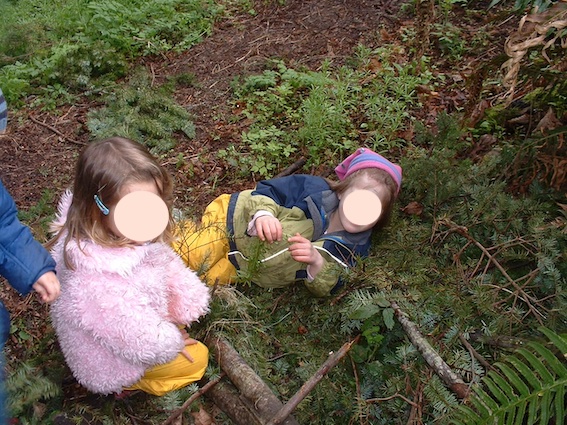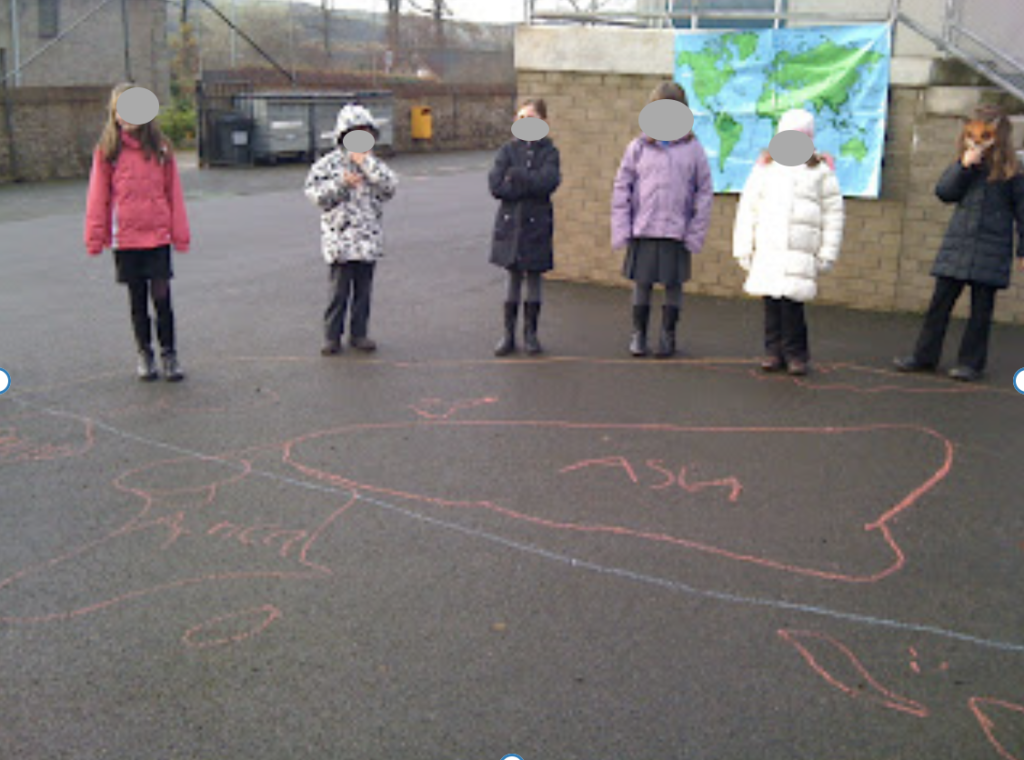According to Sobel (2008) there are 7 play themes – common to children anywhere – any country, any background, any climate or culture, when children have safe free time in nature. Over the past few years I’ve found these to be really helpful when planning activities or setting up an outdoor play space for children. Below is a short summary of each theme.
Making forts and dens
Special places to hide away: home from home in nature, a bridge to the wider world and a place to bond with the natural world, allowing children to feel comfortable in the landscape, connected to it and eventually committed to acting as stewards to it.

The Coombes School has lots of nooks, crannies and little dens throughout its grounds for children to play in.
Playing hunting and gathering games
Fishing, capturing animals, collecting treasures, scouting, climbing, throwing activities, capture the flag, kick the can, hide ‘n’ seek, bushcraft skills. A lot of this is about developing practical skills in a social context.

Shaping small worlds – creating miniature worlds
This helps lead onto understanding sustainability. The impact of learning can be monitored, abstract concepts can be made more concrete, e.g. climate change, etc.

Developing friendships with animals
Pick them up, hold them close, care for them, become them: have animal costumes, masks, opportunities to stumble across and find life.
Constructing adventures
Following streams, exploring the world, taking risks! Watch, listen and find out from children what their idea of an adventure is. A super book Adventures in Nature is about adventures undertaken by pre-school children in Verona, Italy. The adventures help children explore their fears and fantasies.

Descending into fantasies
Having an imaginary friend (or several), acting out scenarios with play figures or through becoming these people or creatures, role play, using stories or films to inspire.

Map making, following paths
Way finding activities, figuring out short cuts, developing an awareness of place and one’s existence in the world!

These themes do not act in isolation. Sometimes children can be playing a game or doing something that covers a multitude of themes. However, when working with children of all ages, it can be useful to consider these themes to provide appealing child-centred experiences.
By using these nature play themes, a bottom up approach that builds upon children’s interests happens. For example, think about what children do with and in trees: climb them, build houses in them, read in them, hug, them, make nests with their leaves, ride on their branches, play with dolls in their shade, gaze at the sky through the leaves, smell them, become friends with them.
Nature play is more about the relationships that can be cultivated between children and trees in their own backyards as a precursor to saving the rainforest as they get older, when they can actually do something about it. Talking to trees and hiding in trees precedes saving trees.
This approach is more effective than an adult imposed top-down mind set, e.g. rainforests are disappearing, so let’s teach children about the rainforests so they will save them.
For a more comprehensive explanation and ideas, read the book – Childhood and Nature: Design Principles for Education – David Sobel (2008).




















Trackbacks/Pingbacks